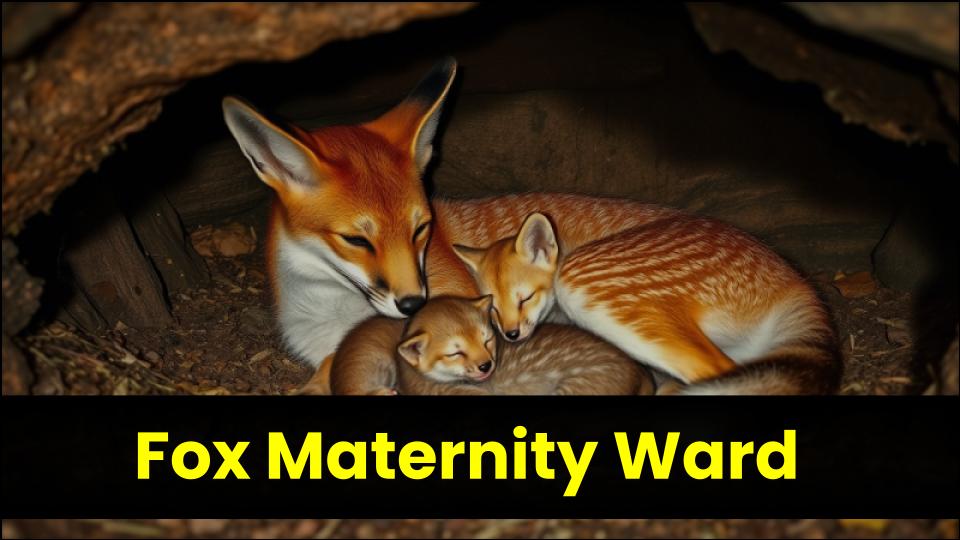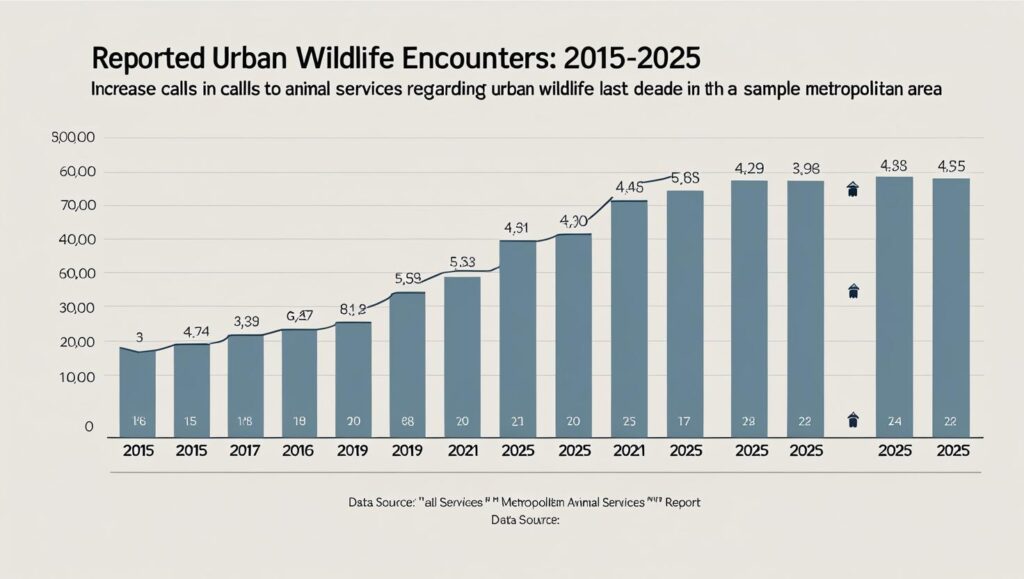A routine check of a garage led to an unexpected discovery for a Nova Scotia resident, who found a mother fox had chosen the space as a safe place to give birth to her kits. The event, which ended safely for the new animal family, underscores a growing pattern of encounters between humans and Rise in Urban Wildlife, prompting experts to issue guidance on how communities can coexist safely with their wild neighbors.

The homeowner, upon finding the vixen and her young, promptly contacted Hope for Wildlife, a non-profit wildlife rehabilitation and education center based in Seaforth. The organization advised the resident to allow the mother to care for her kits in the sheltered space undisturbed. “They are safe here,” the homeowner affirmed, a sentiment praised by wildlife advocates.
An Unexpected Nursery: A Case Study in Coexistence
The decision to let the fox family remain in the garage is a textbook example of the approach wildlife experts recommend. According to Hope for Wildlife, which has rescued and rehabilitated over 85,000 animals since 1997, interfering with a wild mother and her young can cause significant stress and may lead to abandonment.
“The best thing you can do is give them space,” explained Hope Swinimer, founder of the organization. “The mother knows what she’s doing. She chose that spot because it was dry, warm, and felt safe. Once the kits are old enough to travel, she will almost certainly move them to a new location on her own.”
This hands-off approach is crucial. Wildlife professionals stress that attempting to remove the animals can be dangerous for both the homeowner and the wildlife. Furthermore, relocating a mother can orphan her young, dramatically reducing their chances of survival.
A Growing Trend: Why Wildlife is Moving into Town
The incident is not an isolated one. Across North America, encounters with animals like foxes, coyotes, raccoons, and deer in suburban and urban environments are on the rise. A key driver of this trend is habitat fragmentation caused by urban sprawl. As cities and suburbs expand into formerly natural areas, animals are left with smaller, disconnected patches of land.
“We’ve built our communities in their habitats,” says Dr. Sheldon Owen, a wildlife extension specialist at West Virginia University. “They’ve learned to adapt to our conditions.”
These “urban adapters” are drawn to residential areas for three main reasons:
- Food: Unsecured garbage cans, pet food left outdoors, and compost piles provide an easily accessible buffet.
- Shelter: Decks, sheds, and garages offer ready-made dens that protect them from predators and the elements.
- Safety: In many suburban landscapes, natural predators are less common than in truly wild areas.
A study by the UW Urban Canid Project at the University of Wisconsin-Madison notes that red foxes, in particular, have adapted remarkably well to living alongside humans, often using man-made structures to their advantage for raising young.

Expert Guidance for Homeowners
Finding a wild animal denning on your property can be startling, but experts agree that panic is the worst response. The Humane Society of the United States provides clear guidelines for homeowners who find themselves in this situation.
What to Do
- Observe from a distance. Confirm that the mother is present and caring for her young. The presence of a mother is the best-case scenario.
- Secure attractants. Remove any pet food, secure garbage lids, and clean up fallen fruit or birdseed to avoid making your property more inviting.
- Be patient. Fox kits typically disperse from the den by the end of the summer. The situation is temporary.
What Not to Do
- Do not feed them. Feeding wild animals makes them lose their natural fear of humans, which can lead to negative interactions and is often detrimental to their health and survival.
- Do not attempt to touch or move the animals. This can provoke a defensive attack and is extremely stressful for the animals.
- Do not seal the entrance. Blocking the entrance to a den can trap the animals inside, leading to a cruel death and potential damage to your property as they try to escape.
“If their presence is truly problematic or in a dangerous location, the best course of action is to contact a certified wildlife control professional or your state’s wildlife agency,” a Humane Society report advises. “They have the training and equipment to handle the situation humanely and safely.”
Looking Forward: A Future of Coexistence
As residential areas continue to press against wildlands, learning to live with wildlife is becoming a necessary skill for many communities. The successful outcome of the garage-dwelling fox family in Nova Scotia serves as a positive model. By remaining calm, seeking expert advice, and showing tolerance, the homeowner ensured the animals’ safety without risk to her own family.
Wildlife experts suggest that this tolerant approach, combined with proactive measures like securing property and removing attractants, is the most effective and humane long-term strategy. As one National Wildlife Federation biologist put it, “Living alongside foxes is pretty remarkable… That should be celebrated.”
FAQ on Fox Maternity Ward
1. Is it dangerous to have a fox family in my yard?
No, foxes are not typically aggressive toward people. They are naturally shy. However, always keep a safe distance, and ensure pets are supervised and vaccinated.
2. Will foxes damage my property?
Property damage is usually minor, such as some digging for a den. The situation is temporary. After the family leaves in the summer, you can seal entry points to prevent re-nesting.
3. What if I find a baby animal that looks abandoned?
Most likely, the mother is nearby hunting for food. Observe from a distance for a few hours. If the mother does not return or the baby is clearly injured, call a local wildlife rehabilitator for advice—do not intervene yourself.
